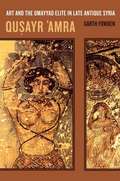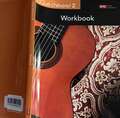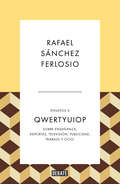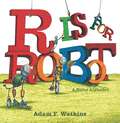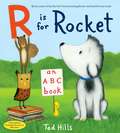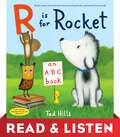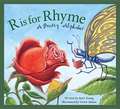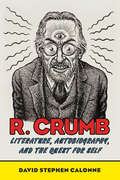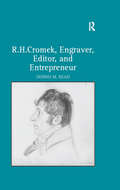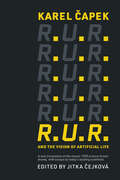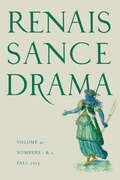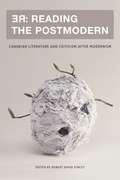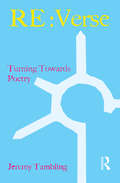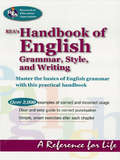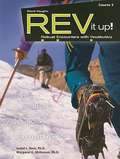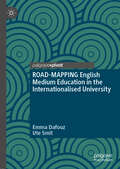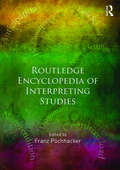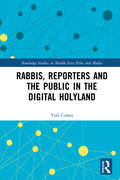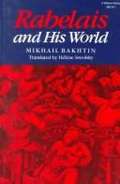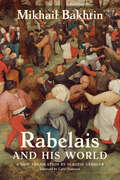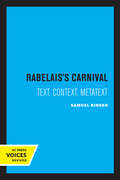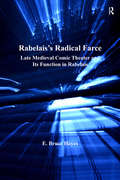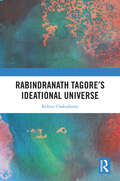- Table View
- List View
Qusayr 'Amra: Art and the Umayyad Elite in Late Antique Syria
by Garth FowdenQusayr'Amra is a major Islamic archaeological site, a princely bathhouse with intact frescoes dating from the mid-eighth century. Fowden offers and imaginative and compelling analysis of the iconography and artistic context of the paintings and addresses fascinating and topical questions about early Islamic culture and the West.
Qué chévere! 2 Workbook 9
by Karin D. FajardoThe ¡Qué chévere! Workbook is designed to supplement the material taught in the student text. Each unit lesson contains supplemental vocabulary, grammar, and culture practice.
Qwertyuiop (Ensayos #4)
by Rafael Sánchez FerlosioQwertyuiop es el cuarto y último volumen de la colección que reúne la obra ensayística de Rafael Sánchez Ferlosio. QWERTYUIOP es la secuencia que, en los teclados alfanuméricos, forman las letras de la hilera superior. Parece una secuencia arbitraria, pero obedece a un orden racional, que combina, entre otros, criterios de frecuencia y proximidad. La decisión de titular así este cuarto y último volumen de los Ensayos de Rafael Sánchez Ferlosio ironiza sobre la diversidad de cuestiones que en él se abordan y que invitan, de entrada, a pensar en una gama de intereses dispersos y antojadizos. No es el caso. Los sutiles pero decisivos contrastes entre felicidad y satisfacción, entre remordimiento y arrepentimiento, entre instruir y enseñar, entre juegos y deportes; la determinante diferencia que implica hablar de sociedad de consumo o de sociedad de producción; las parejas de opuestos que forman conceptos como ocio y negocio, tiempo consuntivo y tiempo adquisitivo, bienes y valores... configuran, de una a otra de las piezas aquí reunidas, todo un campo de tensiones que tiene por trasfondo asuntos a los que Ferlosio nunca ha dejado de prestar atención -como la educación, la publicidad, la televisión, el trabajo, la mentalidad competitiva, el papel de la mujer, la comercialización de la belleza- y en los que se manifiesta su particular actitud crítica ante la modernidad, heredera y continuadora de la de autores como Thorstein Veblen y Th.W. Adorno. Esta obra ha recibido una ayuda a la edición del Ministerio de Educación, Cultura y Deporte.
R Is for Robot: A Noisy Alphabet
by Adam F. WatkinsThese noisy robots make the alphabet a hilarious adventure! In this noisy alphabet book, Adam F. Watkins’s silly robots are building the alphabet. Featuring hilarious robots making goofy noises, this alphabet book is perfect for young readers.
R Is for Rocket: An ABC Book (Rocket)
by Tad HillsLearn the ABCs with Rocket, the dog who inspires kids to read and write! This irresistible alphabet book from the creator of the New York Times bestsellers How Rocket Learned to Read and Rocket Writes a Story is sure to appeal to kids, parents, teachers, and librarians. From finding acorns, to balancing on a ball, to drawing a colorful caterpillar with crayons, readers will love exploring the wonderful world of Rocket and his friends. The whole cast is featured, among them the little yellow bird, the owl, Bella the squirrel, and more. Even Goose from the beloved and bestselling Duck & Goose books makes a cameo appearance! With charming and delightful scenes for every letter, here's an ode to the wondrous, mighty, gorgeous alphabet.
R Is for Rocket: An ABC Book: Read & Listen Edition (Rocket)
by Tad HillsLearn the ABCs with Rocket, the dog who inspires kids to read and write!This irresistible alphabet book from the creator of the New York Times bestsellersHow Rocket Learned to Read and Rocket Writes a Story is sure to appeal to kids, parents, teachers, and librarians. From finding acorns, to balancing on a ball, to drawing a colorful caterpillar withcrayons, readers will love exploring the wonderful world of Rocket and his friends. The whole cast is featured, among them the little yellow bird, the owl, Bella the squirrel, and more. Even Goose from the beloved and bestselling Duck & Goose books makes a cameo appearance! With charming and delightful scenes for every letter, here's an ode to the wondrous, mighty, gorgeous alphabet.This Read & Listen edition contains audio narration.
R is for Rhyme: A Poetry Alphabet
by Judy YoungBring the magic of poetry to life with R is for Rhyme: A Poetry Alphabet. From acrostics and ballads to meter and metaphor, author and poet Judy Young has written a delightful collection of poems to illustrate poetic tools, terms and techniques. Each term or technique is demonstrated in an accompanying poem so readers can see the method at work. Whether haiku or rap, sonnets or cinquain, budding writers of all ages will be inspired to put their imaginations to work crafting their own poems.
R. Crumb: Literature, Autobiography, and the Quest for Self
by David Stephen CalonneRobert Crumb (b. 1943) read widely and deeply a long roster of authors including Robert Louis Stevenson, Charles Dickens, J. D. Salinger, Jack Kerouac, William S. Burroughs, and Allen Ginsberg, as well as religious classics including biblical, Buddhist, Hindu, and Gnostic texts. Crumb’s genius, according to author David Stephen Calonne, lies in his ability to absorb a variety of literary, artistic, and spiritual traditions and incorporate them within an original, American mode of discourse that seeks to reveal his personal search for the meaning of life. R. Crumb: Literature, Autobiography, and the Quest for Self contains six chapters that chart Crumb’s intellectual trajectory and explore the recurring philosophical themes that permeate his depictions of literary and biographical works and the ways he responds to them through innovative, dazzling compositional techniques. Calonne explores the ways Crumb develops concepts of solitude, despair, desire, and conflict as aspects of the quest for self in his engagement with the book of Genesis and works by Franz Kafka, Jean-Paul Sartre, the Beats, Charles Bukowski, and Philip K. Dick, as well as Crumb’s illustrations of biographies of musicians Jelly Roll Morton and Charley Patton. Calonne demonstrates how Crumb’s love for literature led him to attempt an extremely faithful rendering of the texts he admired while at the same time highlighting for his readers the particular hidden philosophical meanings he found most significant in his own autobiographical quest for identity and his authentic self.
R. H. Cromek, Engraver, Editor, and Entrepreneur
by Dennis M. ReadBased on meticulous archival research, Dennis M. Read's study offers the most accurate and thorough account to date of the engraver, editor, and arts enthusiast R. H. Cromek. Though he is best known today as William Blake's nemesis, Cromek made significant contributions to the vitality of the arts in nineteenth-century Britain. Read traces Cromek's early years as an accomplished engraver, his collaborations and falling out with Blake, and his editing and publishing ventures, showing him to be a pioneer who recognized the opportunities of the emerging market economy. Read's descriptions of Cromek's disastrous associations with the Chalcographic Society, his publication of Robert Burns's unpublished works, and his duping by the perpetrator of a literary hoax make for fascinating reading and tell us much about the commercial art and publishing scenes in England and Scotland. Perhaps most important, Read salvages Cromek's reputation as an unscrupulous exploiter of Blake and others. A fuller and more balanced portrait emerges that shows Cromek's efforts to bring the arts to emerging cities of the midlands and beyond, describes his friendships and associations with luminaries of the fine arts and literature such as Leigh Hunt and Benjamin West, and challenges more biased reports of his successes and failures as an entrepreneur.
R.U.R. and the Vision of Artificial Life
by Karel CapekA new translation of Karel Čapek&’s play R.U.R.—which famously coined the term &“robot&”—and a collection of essays reflecting on the play&’s legacy from scientists and scholars who work in artificial life and robotics.Karel Čapek's &“R.U.R.&” and the Vision of Artificial Life offers a new, highly faithful translation by Štěpán Šimek of Czech novelist, playwright, and critic Karel Čapek&’s play R.U.R.: Rossum&’s Universal Robots, as well as twenty essays from contemporary writers on the 1920 play. R.U.R. is perhaps best known for first coining the term &“robot&” (in Czech, robota means serfdom or arduous drudgery). The twenty essays in this new English edition, beautifully edited by Jitka Čejková, are selected from Robot 100, an edited collection in Czech with perspectives from 100 contemporary voices that was published in 2020 to celebrate the hundredth anniversary of the play.Čapek&’s robots were autonomous beings, but biological, not mechanical, made of chemically synthesized soft matter resembling living tissue, like the synthetic humans in Blade Runner, Westworld, or Ex Machina. The contributors to the collection—scientists and other scholars—explore the legacy of the play and its connections to the current state of research in artificial life, or ALife. Throughout the book, it is impossible to ignore Čapek&’s prescience, as his century-old science fiction play raises contemporary questions with respect to robotics, synthetic biology, technology, artificial life, and artificial intelligence, anticipating many of the formidable challenges we face today.ContributorsJitka Čejková, Miguel Aguilera, Iñigo R. Arandia, Josh Bongard, Julyan Cartwright, Seth Bullock, Dominique Chen, Gusz Eiben, Tom Froese, Carlos Gershenson, Inman Harvey, Jana Horáková, Takashi Ikegami, Sina Khajehabdollahi, George Musser, Geoff Nitschke, Julie Nováková, Antoine Pasquali, Hemma Philamore, Lana Sinapayen, Hiroki Sayama, Nathaniel Virgo, Olaf Witkowski
RD vol 41 num 12
by The University of Chicago PressThis is volume 41 issue 12 of Renaissance Drama. Renaissance Drama explores the rich variety of theatrical and performance traditions and practices in early modern Europe and intersecting cultures. The sole scholarly journal devoted to the full expanse of Renaissance theatre and performance, the journal publishes articles that extend the scope of our understanding of early modern playing, theatre history, and dramatic texts and interpretation, encouraging innovative theoretical and methodological approaches to these traditions, examining familiar works, and revisiting well-known texts from fresh perspectives.
RE: Canadian Literature and Criticism after Modernism (Reappraisals: Canadian Writers)
by Robert David StaceyIt would be difficult to exaggerate the worldwide impact of postmodernism on the fields of cultural production and the social sciences over the last quarter century—even if the concept has been understood in various, even contradictory, ways. An interest in postmodernism and postmodernity has been especially strong in Canada, in part thanks to the country’s non-monolithic approach to history and its multicultural understanding of nationalism, which seems to align with the decentralized, plural, and open-ended pursuit of truth as a multiple possibility as outlined by Jean-François Lyotard. In fact, long before Lyotard published his influential work The Postmodern Condition in 1979, Canadian writers and critics were employing the term to describe a new kind of writing. RE: Reading the Postmodern marks a first cautious step toward a history of Canadian postmodernism, exploring the development of the idea of the postmodern and debates about its meaning and its applicability to various genres of Canadian writing, and charting its decline in recent years as a favoured critical trope.
RE: Turning Towards Poetry
by Jeremy TamblingMany people are intimidated by poetry, thinking it difficult and high-brow and not for them. But it is still considered an essential part of art and literature. RE:Verse asks; Why and How should we read poetry? This book, aimed at people just starting with literature, takes nothing for granted but opens poetry up to all in a way that makes it both exciting and fresh. Examples are taken from a balanced combination of traditional writers such as Keats, Wordsworth, Blake and Shakespeare, and modern poets such as Seamus Heaney, Jackie Kay and Benjamin Zephaniah. RE:Verse ranges over all periods of literature, and over the many critical theories that attempt to show why poetry matters. It places poems into their historical context, looks at poetry in translation, and discusses why much poetry is so difficult as to seem almost unreadable. It sets the standard for talking about how to read poetry, and what to do when this seems to be impossibly difficult. Ultimately, it is the essential, easy-to-read guide to the subject.
REA's Handbook of English Grammar, Style, and Writing (Language Learning Ser.)
by The Editors of REAREA's Handbook of English Grammar, Style, and Writing is a must for students! The ability to write and speak correctly and effectively is a prerequisite for doing well in all subjects, including the physical and social sciences, math and the liberal arts. Writing and speaking skills become even more important when seeking a job and trying to succeed in a chosen career. This easy-to-understand, straightforward English handbook doesn't use the technical jargon usually found in English grammar books. Instead, our handbook provides hundreds of examples from which it is possible to easily see what is correct and what is incorrect in all areas of English grammar and writing. Practice exercises with answers follow each chapter. The handbook covers the following in detail: nouns, verbs, adjectives, paragraphs, composition, punctuation, spelling, and much more. Our handbook explains the basics of: * Rules and exceptions in grammar * Spelling and proper punctuation * Common errors in sentence structure * Correct usage (with 2,000 examples of correct grammar & usage) * Effective writing skills. All the English essentials you need to know are contained in this simple and practical book.
REV It Up! Robust Encounters with Vocabulary, Course 3
by Isabel L. Beck Margaret G. MckeownNIMAC-sourced textbook
ROAD-MAPPING English Medium Education in the Internationalised University
by Emma Dafouz Ute SmitThis book is the first to offer a conceptual framework of English-medium education that can be used across different international higher education (HE) contexts. It provides readers with an understanding of the complexities, possibilities and challenges that this phenomenon raises in the 21st century. Making the case for the pressing need for an overarching conceptualisation, the authors discuss, from a theoretical point of view, the recently introduced ROAD-MAPPING framework for ‘English Medium Education in Multilingual University Settings’ (EMEMUS). Drawing on current research and examples from a variety of settings, the book makes a strong case for the applicability of the framework in two important directions: as a methodological tool for researching educational practices and as an analytical guide to examine policies and teacher education programmes.
ROUTLEDGE ENCYCLOPEDIA OF INTERPRETING STUDIES
by Franz PochhackerThe Routledge Encyclopedia of Interpreting Studies is the authoritative reference for anyone with an academic or professional interest in interpreting. Drawing on the expertise of an international team of specialist contributors, this single-volume reference presents the state of the art in interpreting studies in a much more fine-grained matrix of entries than has ever been seen before. For the first time all key issues and concepts in interpreting studies are brought together and covered systematically and in a structured and accessible format. With all entries alphabetically arranged, extensively cross-referenced and including suggestions for further reading, this text combines clarity with scholarly accuracy and depth, defining and discussing key terms in context to ensure maximum understanding and ease of use. Practical and unique, this Encyclopedia of Interpreting Studies presents a genuinely comprehensive overview of the fast growing and increasingly diverse field of interpreting studies.
Rabbis, Reporters and the Public in the Digital Holyland (Routledge Studies in Middle East Film and Media)
by Yoel CohenFocused on the triangular relationship between rabbis, journalists and the public, this book analyses each group’s role in influencing the agenda around religion in Israel. The book draws upon the author's original research, comprising an analysis of the coverage of religion on four Israeli news websites, a series of surveys of rabbis, journalists, and the public, as well as a large number of interviews conducted with a range of stakeholders: community rabbis, teacher rabbis, and religious court judges; reporters, editors, and spokespersons; and the Israeli Jewish public. Key questions include: What are rabbis’ philosophical views of the media? How does the media define news about Judaism? What aspect of news about religion and spirituality interest the public? How do spokespersons and rabbis influence the news agenda? How is the triangular relationship between rabbis, journalists and the public being altered by the digital age? Despite a lack of understanding about mass media behaviour among many rabbis, and, concurrently, a lack of knowledge about religion among many journalists, it is argued that there is shared interest between the two groups, both in support of mass-media values like the right to know and freedom of expression. It is further argued that the public's attitude to news about religion is significant in determining what journalists should publish. The book will be of interest to those studying mass communications, the media, Judaism and Israeli society, as well as researchers of media and religion.
Rabbis, Reporters and the Public in the Digital Holyland (Routledge Studies in Middle East Film and Media)
by Yoel CohenFocused on the triangular relationship between rabbis, journalists and the public, this book analyses each group’s role in influencing the agenda around religion in Israel.The book draws upon the author's original research, comprising an analysis of the coverage of religion on four Israeli news websites, a series of surveys of rabbis, journalists, and the public, as well as a large number of interviews conducted with a range of stakeholders: community rabbis, teacher rabbis, and religious court judges; reporters, editors, and spokespersons; and the Israeli Jewish public. Key questions include: What are rabbis’ philosophical views of the media? How does the media define news about Judaism? What aspect of news about religion and spirituality interest the public? How do spokespersons and rabbis influence the news agenda? How is the triangular relationship between rabbis, journalists and the public being altered by the digital age? Despite a lack of understanding about mass media behaviour among many rabbis, and, concurrently, a lack of knowledge about religion among many journalists, it is argued that there is shared interest between the two groups, both in support of mass-media values like the right to know and freedom of expression. It is further argued that the public's attitude to news about religion is significant in determining what journalists should publish.The book will be of interest to those studying mass communications, the media, Judaism and Israeli society, as well as researchers of media and religion.
Rabelais and His World
by Mikhail M. Bakhtin Helene IswolskyThis classic work by the Russian philosopher and literary theorist Mikhail Bakhtin (1895-1975) examines popular humor and folk culture in the Middle Ages and the Renaissance. One of the essential texts of a theorist who is rapidly becoming a major reference in contemporary thought, Rabelais and His World is essential reading for anyone interested in problems of language and text and in cultural interpretation.
Rabelais and His World, a new translation
by Mikhail BakhtinA new and improved translation of Mikhail Bakhtin&’s classic and celebrated study of carnival.Mikhail Bakhtin&’s classic study of carnival, laughter, the grotesque, and medieval and renaissance folk culture has been the inspiration for countless new ideas in the humanities, in literature and the arts, and throughout human culture over the last half century.Rabelais and His World is a study devoted to French Renaissance writer François Rabelais, author of Gargantua and Pantagruel. Rabelais, Bakhtin argues, can only be properly understood against the backdrop of a millennia-old tradition of festivity and laughter, a tradition that included the Roman Saturnalia, medieval carnivals and feasts of fools, and Greek satyr plays and symposia from antiquity, as well as countless medieval works belonging to various smaller genres, circus shows, foul language and gesture, and much more.Bakhtin claims this tradition is united by the imagery it uses and the worldview it expresses. Its imagery is ambivalent. It effaces the boundaries between bodies, connects in one image birth with death, praise with invective. Its worldview is optimistic, defeating all fears and all official seriousness with laughter.The book&’s new translation is informed by recent scholarship on Bakhtin and contains the most extensive scholarly apparatus this book has received to date.
Rabelais's Carnival: Text, Context, Metatext (The New Historicism: Studies in Cultural Poetics #10)
by Samuel KinserHow is it possible, after four centuries, that a major episode in Rabelais's novels remains systematically misread? The episode, which playfully and grotesquely treats the relation of Carnival to Lent, occurs in Rabelais's Fourth Book, his last and most artfully crafted novel. Samuel Kinser argues that the text has been distorted because critics have not attended to the episode's performative as well as literary contexts, overlooking the innovative use Rabelais made in his work of his immediate world. In this original interpretation of the Fourth Book, Kinser evokes the gestures, games, and visual, oral, bodily semantics of Carnival and Lent as they were performed in Rabelais's day. He also underscores the importance to Rabelais of the invention of printing, an innovation which revolutionized the relationships of author and reader. Understanding this and fearing it, Rabelais adopted an extraordinary set of disguises as an author, disguises which in their bewildering interplay constitute the truest sense of his carnival. This title is part of UC Press's Voices Revived program, which commemorates University of California Press's mission to seek out and cultivate the brightest minds and give them voice, reach, and impact. Drawing on a backlist dating to 1893, Voices Revived makes high-quality, peer-reviewed scholarship accessible once again using print-on-demand technology. This title was originally published in 1990.
Rabelais's Radical Farce: Late Medieval Comic Theater and Its Function in Rabelais
by E. Bruce HayesIn the first extended investigation of the importance of dramatic farce in Rabelais studies, Bruce Hayes makes an important contribution to the understanding of the theater of farce and its literary possibilities. By tracing the development of farce in late medieval and Renaissance comedic theater in comparison to the evolution of farce in Rabelais's work, Hayes distinguishes Rabelais's use of the device from traditional farce. While traditional farce is primarily conservative in its aims, with an emphasis on maintaining the status quo, Rabelais puts farce to radical new uses, making it subversive in his own work. Bruce Hayes examines the use of farce in Pantagruel, Gargantua, and the Tiers and Quart livres, showing how Rabelais recast farce in a humanist context, making it a vehicle for attacking the status quo and posing alternatives to contemporary legal, educational, and theological systems. Rabelais's Radical Farce illustrates the rich possibilities of a genre often considered simplistic and unsophisticated, disclosing how Rabelais in fact introduced both a radical reformulation of farce, and a new form of humanist satire.
Rabindranath Tagore's Ideational Universe
by Bidyut ChakrabartyThis book explores Tagore’s socio-political ideas through his novels, short stories, and essays. It looks at Tagore beyond his literary achievements and examines his notions of friendship, religion, nationalism, civilization, and knowledge. It highlights his uniquely textured and innovatively argued views on critical aspects of humanity in the tumultuous phase of Indian nationalist campaign that also witnessed a kaleidoscope of myriad ideological voices, besides the hegemonic mainstream nationalist campaign, led by Gandhi. It captures the bard’s creative ideational priorities and his attempts to radically transform the prevalent socio-economic and politico-cultural environment. The volume will be of great interest to scholars and researchers of history, politics, literature, and South Asian studies.
